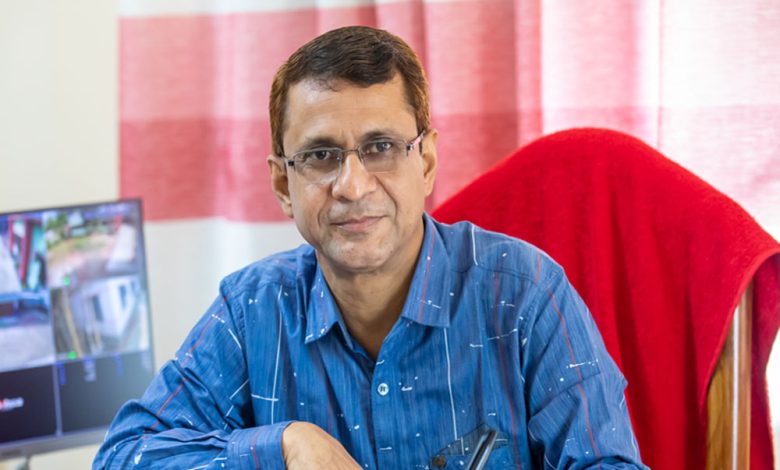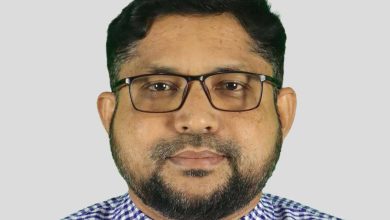The quiet architecture of change: Microfinance’s grip on rural Bangladesh- Motinur Rahman


Holiday Post Report: Md. Motinur Rahman, Executive Director of Ahead Social Organization (ASO), does not speak in metaphors. He speaks in systems. In frameworks. In numbers. But behind those numbers lies a story more intricate than simple arithmetic—a story about a country that continues to lean on microfinance as both lifeline and lever.
As Bangladesh moves through an era marked by economic flux and social ambition, Rahman positions microfinance not merely as a development tool, but as a structural necessity. “More than 3.52 crore families are now connected to microfinance,” he states with practiced precision. It is not an abstraction. It is infrastructure—silent, embedded, and irreplaceable. By his estimate, this sector now touches 75 percent of the population either directly or by implication. That reach, he insists, does not just reflect popularity—it signals dependence.
In an age where finance has become increasingly abstract, built atop screens and algorithms, the Bangladeshi microfinance model remains resolutely human. It still walks village paths. It still speaks face to face. And Rahman, with the calm cadence of someone who has seen the inside of both hardship and policy, draws attention to that rootedness. “Microfinance is not a recent solution,” he says. “Its roots trace back to the 1990s, when the nation needed models of trust more than models of growth.”
But this trust has not grown in a vacuum. It has matured under regulatory strain, political wind shifts, and global disruptions. The COVID-19 pandemic, for example, revealed a paradox. While much of the world’s economic scaffolding trembled, Bangladesh’s rural backbone held firmer than expected. According to Rahman, MFIs played a pivotal role in that resilience, particularly by reinforcing agriculture, fisheries, and livestock production. “We gave more than loans—we gave continuity.”
That continuity, however, is neither automatic nor guaranteed. The terrain of microfinance is uneven. Some regions, he concedes, still suffer from weak engagement and irregular repayment. But he does not lament; he diagnoses. He argues that targeted activation of local resources—when combined with public sector collaboration—could awaken dormant economies and convert rural stagnation into rural enterprise. To Rahman, the problem is not poverty itself, but a missed opportunity in seeing poverty as static.
Policy, in this telling, becomes a condition of success. Rahman credits the current government for maintaining a pro-MFI stance but is quick to suggest that simplification could enhance impact. More fluid financing from state and global institutions, and a recalibration of savings-related restrictions imposed by the Microcredit Regulatory Authority (MRA), would, in his view, transform scale into sustainability. It is not a plea—it is a proposition.
He returns, often, to the untapped promise of youth. Bangladesh’s demographic dividend, he suggests, risks becoming a statistical burden unless directed with intent. “Seventy percent of our young people are active, but many are misaligned. They drive rickshaws. It’s work, but not growth.” For him, the challenge is not employment—it is the absence of productive absorption. MFIs, he argues, are uniquely placed to lead this transition if they shift from lending alone to skilling and mentoring. That shift, he implies, is already overdue.
Within ASO, sustainability is not a slogan—it is a design principle. Rahman describes initiatives that link lending to long-term social transformation, especially in agriculture, livestock, and rural enterprise. He sees responsible finance not as a check-box of ESG culture, but as the natural function of institutions embedded in community realities. “Our mission is not to reduce poverty,” he states, “but to redesign possibility.”
The future, in Rahman’s view, is not a timeline. It is a literacy. If people are educated in health, financial behavior, and technology, the system will evolve. Not because it is taught to, but because it will want to. That voluntary transformation—bottom-up, not top-down—is where he places his faith.
He speaks briefly, almost reluctantly, about leadership. But when he does, it is with a conviction sharpened by experience. Institutional strength, he believes, lies in emotional alignment—not just skill. Staff satisfaction, team solidarity, and a culture of shared ownership are, to him, more consequential than any funding cycle. “If you can build that,” he says, “you have already built half your future.”
In a country where attention shifts quickly and policy debates often race past the margins, Rahman’s words serve as quiet architecture. Not to impress. To endure. And in doing so, he leaves little doubt: microfinance in Bangladesh is no longer an experiment. It is the scaffolding of progress—deliberate, localized, and stubbornly alive.





